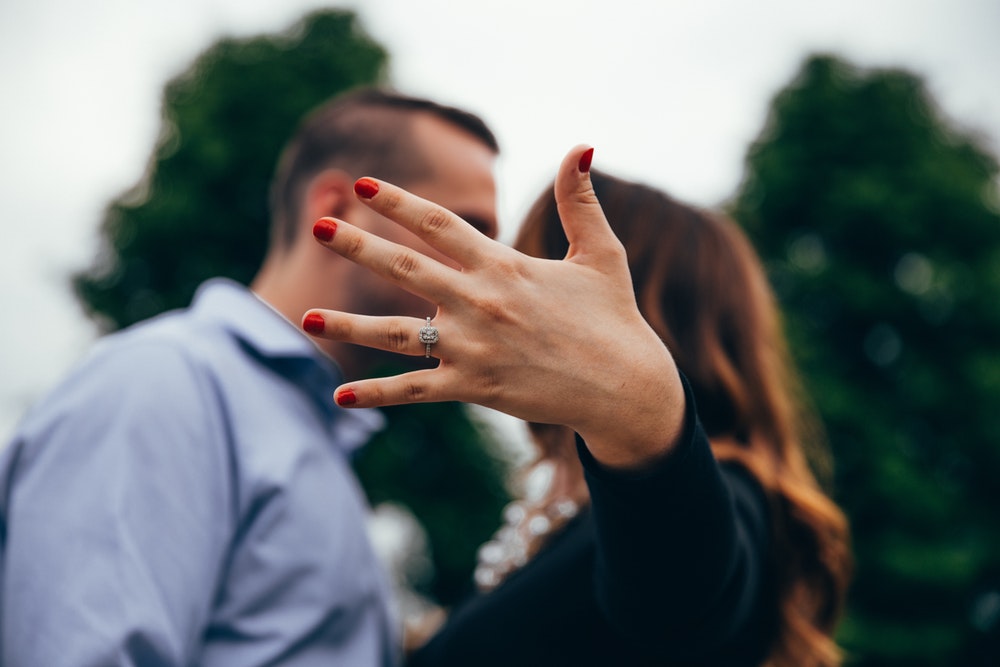Nothing says everlasting love like a vintage engagement ring. These pieces are timeless and hold their value exceptionally well. But there are many copycats out there claiming to be vintage, and you don’t want to fall for a scam.
Here are a few tips to help you find a true vintage engagement ring.
1. Seek One-of-a-Kind Items
Unless you have a fortune to spend on commissioning a designer jeweler, the best way to get a one-of-a-kind item is to seek vintage pieces. You can shop estate sales or websites that sell estate jewelry to find unique pieces.
This is also a great strategy for selecting a vintage ring. Ring trends tend to follow linear paths and few modern jewelers deviate from those trends because it’s simply too expensive to make rings that aren’t guaranteed to sell.
Vintage pieces will clearly stand out amidst modern trends, and you’ll easily be able to identify it for that reason.
2. Look for the Details
The typical vintage engagement ring is unique and possesses specific details. Always check out the following when seeking a great engagement ring:
- Setting: The setting will vary by the era, but typically there will be one large stone in the middle with decorative filigree or smaller jewels flanking it.
- Craftsmanship: It’s very difficult for modern jewelers to mimic the craftsmanship of a vintage ring simply because few craftsmen can replicate the unique standards of jewelry-making from the past. The craftsmanship will be detailed, but there may also be slight imperfections because it was entirely manmade and not touched by modern machinery.
- Stone Quality: You can’t really apply today’s standards of quality to the rings used in vintage rings. For example, dark flecks in diamonds or slightly colored diamonds were once much more popular than bright white, pure diamonds. This doesn’t necessarily diminish a ring’s beauty; it’s simply in the eye of the beholder.
Note other details that indicate it’s from a vintage time period to help you avoid paying a premium for a cheap replica.
3. Know Your History
Vintage refers to any item that was made 50 years ago or more. So, any ring with a real letter of authenticity setting the date earlier than 1970 would be considered vintage. But the truly unique and valuable rings came from the following periods:
- Georgian: This era spans from 1714 to 1830, and is noted for its unique use of stones. A single ring typically had many stones cut into different shapes, sizes, and arrangements. Many rings also carried intricate motifs of floral patterns, bows, or scrolling.
- Victorian: From 1835 to 1900, rings were fashioned after the tastes of the queen. It was common for birthstones to be used in engagement rings, so there were fewer diamond pieces and more colored stones.
- Edwardian: The Edwardian era was short, lasting from 1901 to 1915, but it was impactful. The metalwork was highly detailed and delicate. Diamonds came back into fashion here.
- Art Deco: Of all the vintage ring fashions, the Art Deco period (1915 to 1935) probably stands out the most. Bold, colorful, and detailed were the order of the day with heavy geometric patterns and plenty of bling in each piece.
- Retro: The years of 1935 to 1950 are considered retro and were largely influenced by Hollywood stars of that time. Highly polished gold with large semi-precious gemstones were very popular.
If you’ve done your research on vintage eras, it’s much easier to identify and select the vintage ring of your choice.
4. Check Authenticity
It’s not always easy to trace the authenticity of a so-called vintage ring, but there are ways to authenticate the age and value of your ring. The easiest is to look at a letter of authenticity stating when the ring was made and the stated value at the time.
When a letter of authenticity isn’t available, which is often the case for estate jewelry, you can take the ring to a professional to have it tested. They can run tests on the metal and examine the stones to tell you how long it has been since the ring was forged and in what era the stone was cut.
Vintage engagement rings don’t come cheap, so do your research to make sure you get a great deal. You’ll be able to rest easy knowing that you’ve done all you can to guarantee you found the perfect ring.









